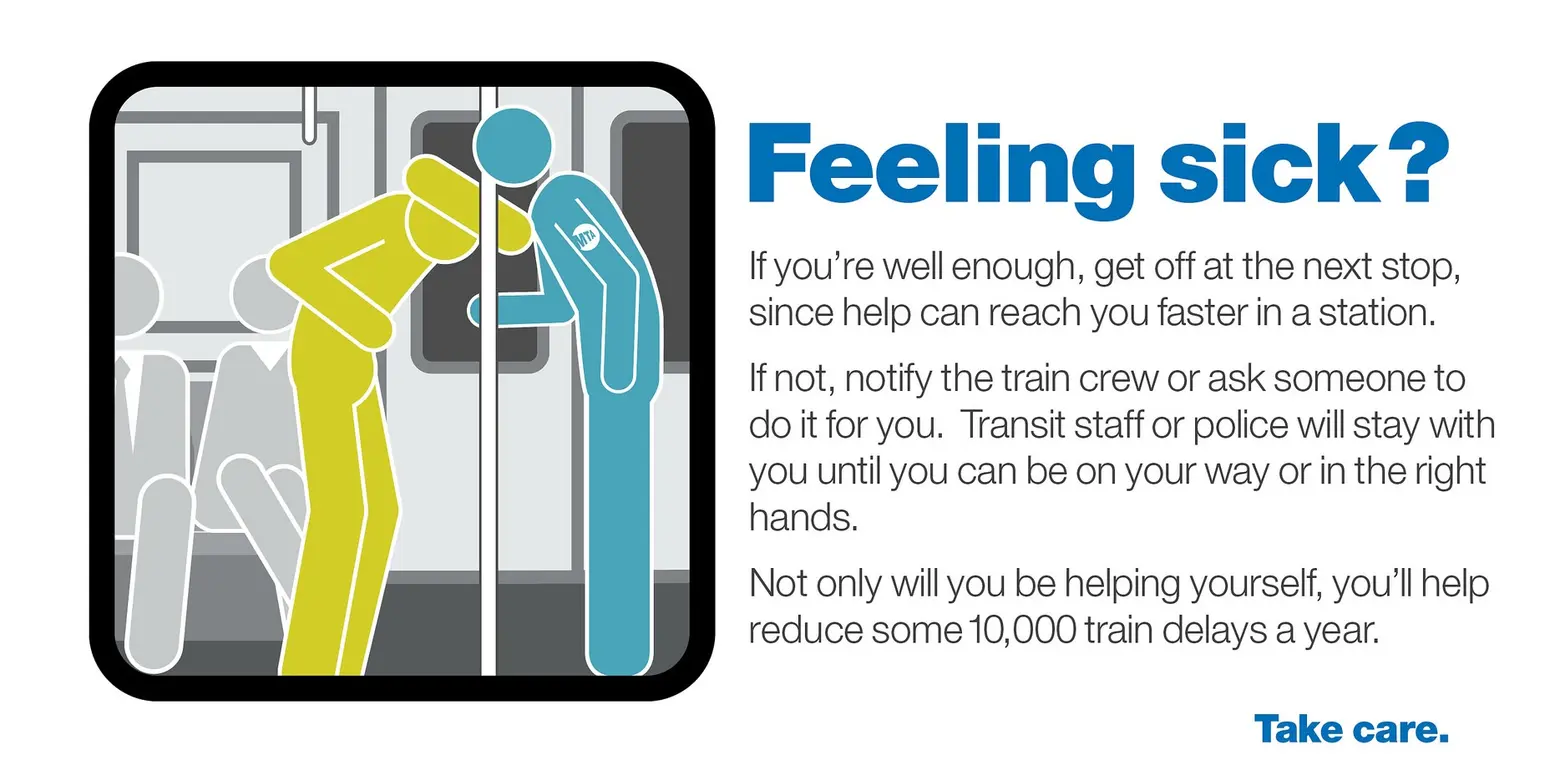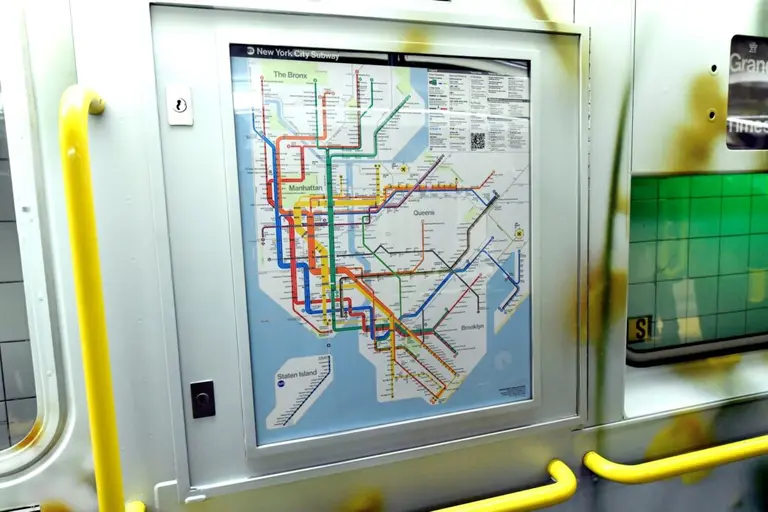The Story Behind Those Infamous ‘Sick Passenger’ Subway Announcements

Image via MTA/Flickr
Admit it–despite your general concern for the well-being of your fellow New Yorkers, you can’t help roll your eyes when that dreaded “sick passenger” announcement comes over the subway intercom. “Why get on the train if you’re not feeling well?” or “Can’t they just move the person to the platform?” are common moans heard during these all-too-common delays. But, it turns out, it’s a lot more complicated than that.
The New York Times took a look at the rise in sick passengers, up to 3,000 a month this year as compared with 1,800 each month in 2012. Every time this happens, the train crew has to notify the rail control center, who then will call an ambulance. It depends on the specific station and time of day how long it will take emergency medical workers to locate the sick patient. Then, if it’s deemed the passenger cannot safely walk, he or she must remain on the train to be assessed. Further, if the passenger has no one to wait with them and there’s no police officer available, it falls on the train conductor to stay with the patient until help arrives. This can lead to the train being pulled out of service altogether. And of course, the delays start a ripple effect throughout the line.
The MTA says most instances of sick passengers are those who have fainted or vomited, but sometimes it’s something more serious like a heart attack or even death (“sick passenger” does not mean a track suicide as many suspect; those instances are referred to as “police investigation”). But riders still feel that one sick person should not delay thousands of others. Back in the late ’90s, the issue was addressed by stationing nurses in several busy stations. This ended in 2008 with budget cuts, but a new ad campaign asks riders who feel ill to get off at the next stop and ask for help.
[Via NYT]
RELATED:




























